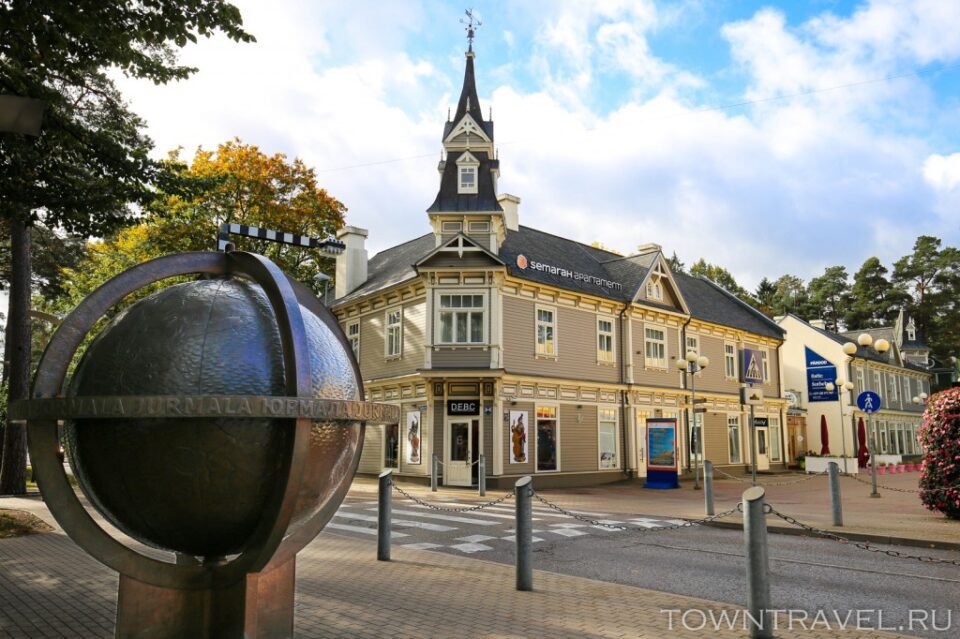Up until the 18th-19th centuries, the territory of the modern resort city on the shore of the Gulf of Riga was occupied by fishing villages. Gradually, these settlements changed status. In 1920, they were united into the city of Riga Seaside (“Riga Jurmala”). Twenty-nine years later, it became a separate district of the Latvian capital. In 1952, Jurmala regained its city status, and today it is home to over 50,000 people. The activities of the residents are mainly related to tourism and the sanatorium-resort sector. Many of Jurmala’s attractions have a complex history. If Riga is the heart of Latvia, Jurmala is one of the manifestations of the Latvian soul: reserved, proud, and thoughtful.
Dzintari Forest Park
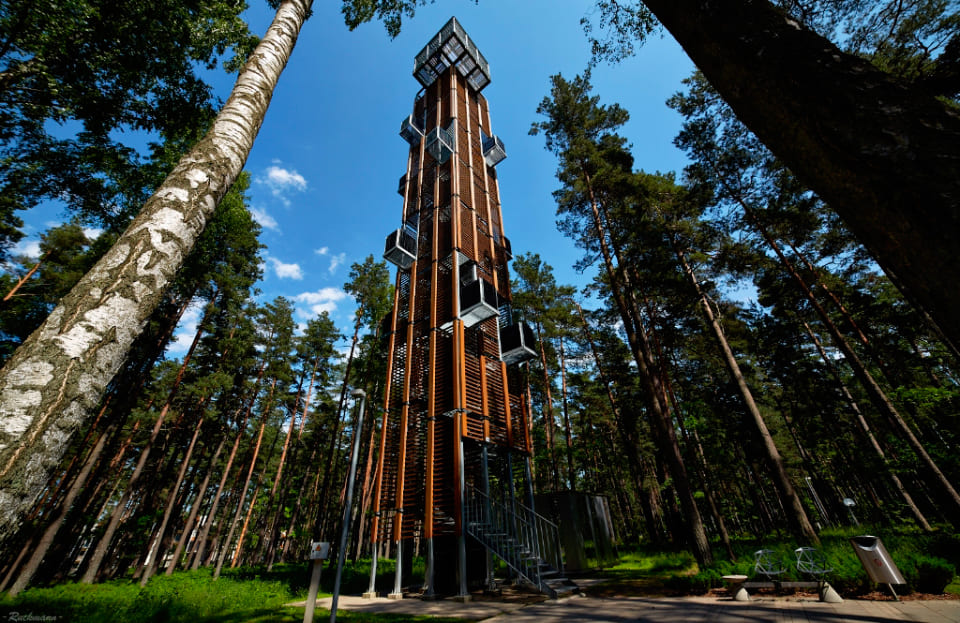
In the center of the resort, near the beach, lies the evergreen Dzintari Forest Park—a beautiful place to relax with family or friends. The 200-year-old pine grove is of particular value. For visitors’ convenience, flat and wide paths are laid throughout the park. It is a very peaceful and quiet place, free from loud music, an abundance of restaurants, barbecue spots, and other commercial stalls. There is a small cafe offering tasty pastries, ice cream, coffee, or refreshing drinks.
The park area is equipped for active recreation with interesting playgrounds. Children of all ages will find something to do—little ones prefer swings or trampolines, older kids climb rope labyrinths or ride electric cars and roller skates. A tower with an observation deck at the top overlooks the pine forest, dunes, and sea. The structure of the tower is interesting—it sways, especially in windy weather, and since it is lattice-like, it can be quite scary.
Jomas Street
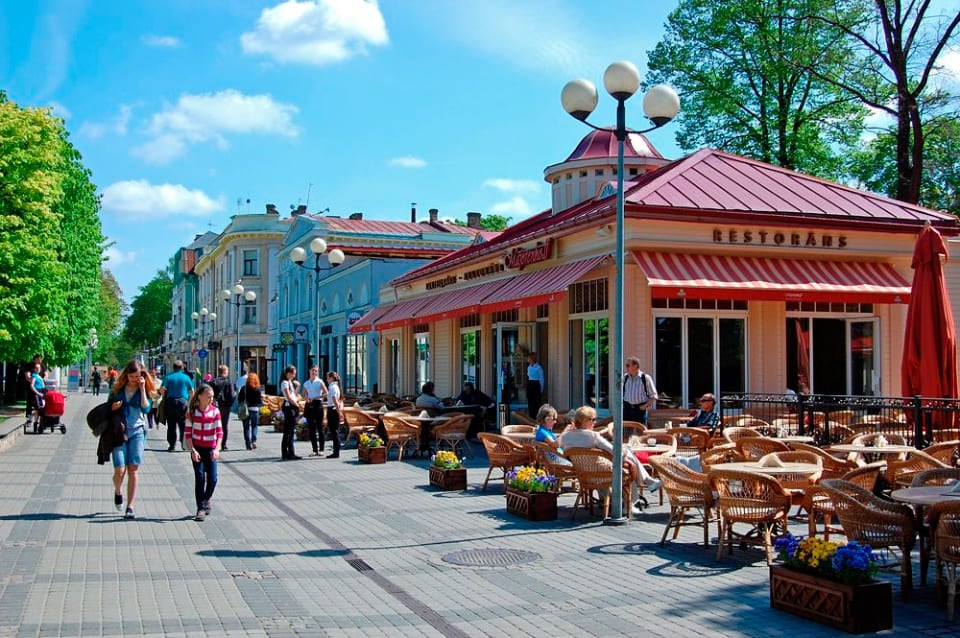
Jomas Street, located in the center, is the oldest street on the seaside, known since the late 19th century. Today, it is a bustling place with souvenir shops, markets, pharmacies, cafes, and hotels. Jomas Street has changed many times due to fires and wars. Wooden houses burned or were destroyed during wars, resulting in new beautiful buildings. Currently, one end of the street leads to the Majori train station, while the other ends at one of the resort’s attractions—the globe.
The street is pedestrian-only. It is especially crowded during the summer months—the wonderful sea climate, pine forest, excellent cuisine, and clean air make the resort attractive to visitors. Locals annually celebrate Jomas Street Day with exciting contests, attractions, concerts, and other interesting events.
Kristaps and Augusta Morbergs’ Summer Residence
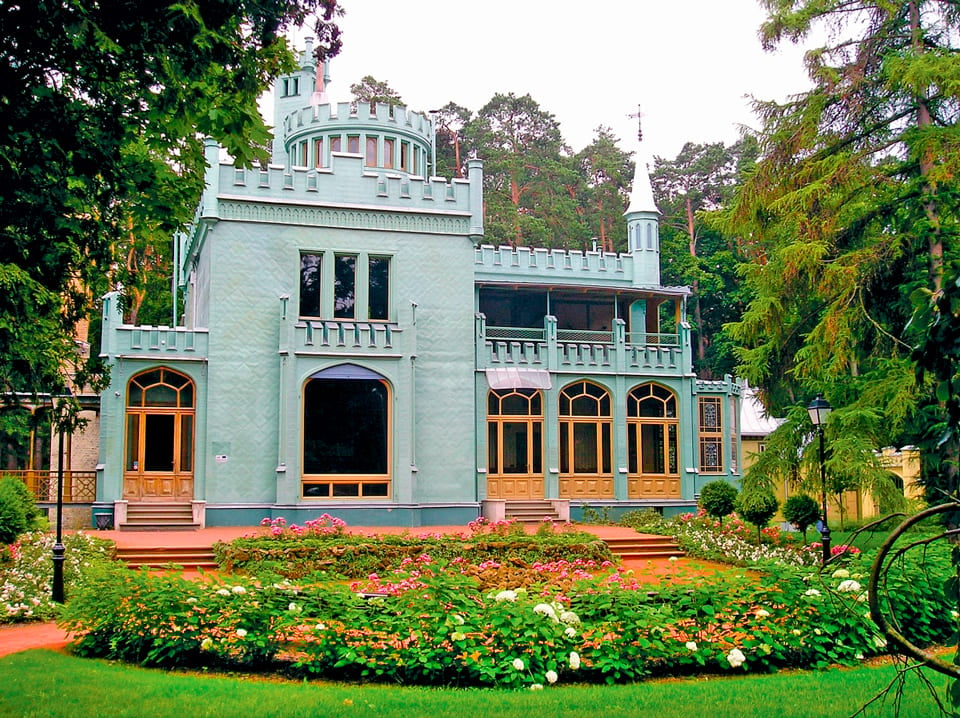
Visitors will be intrigued by the summer residence of construction magnate Kristaps Morbergs and his wife. This unique wooden structure, built in the neo-Gothic style, was designed by Morbergs himself. Construction of the mansion began in 1883, with changes to the project spanning several years, ultimately taking over thirty years. The result is an extraordinary architectural residence.
With turrets topped with weathervanes, colorful stained glass, and airy terraces, the structure exudes a whimsical lightness, resembling a castle from a children’s fairy tale. Mr. Morbergs loved to experiment and incorporated his fantasies into the design, such as routing house pipes inside to use rainwater for watering greenhouse plants. The Morbergs bequeathed the house to the University of Latvia. The mansion was recently restored, recreating its original interior and facade.
Jurmala Open-Air Museum
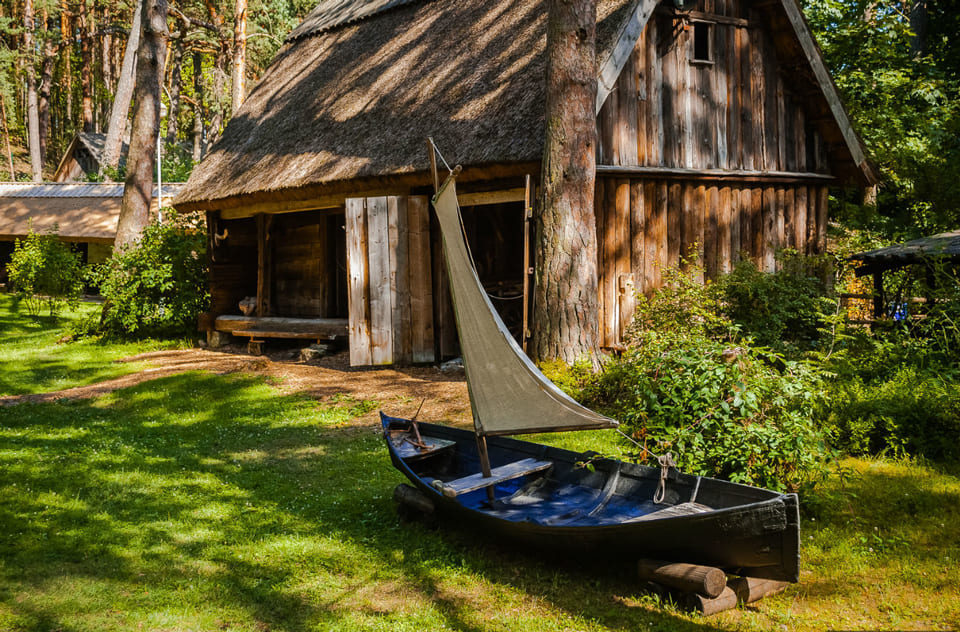
This area was once a simple fishing village where men fished and smoked fish while women managed household chores. In 1970, it was decided to create an exhibition on the site of the settlement. Boats, smokers, nets, anchors, fishermen’s houses, and various tools were brought in from all over Latvia.
The museum’s management organized interesting and informative tours that not only show the homes and tools but also teach visitors how to repair nets and tie maritime knots. Freshly smoked fish is offered for tasting, and Latvian folk songs are played. All the museum’s items, including the huts, are original and were used by fishermen and their families.
Open Tuesday to Sunday from 10:00 to 17:00. Admission is free. Located in the Dubulti area.
Aspazija House-Museum
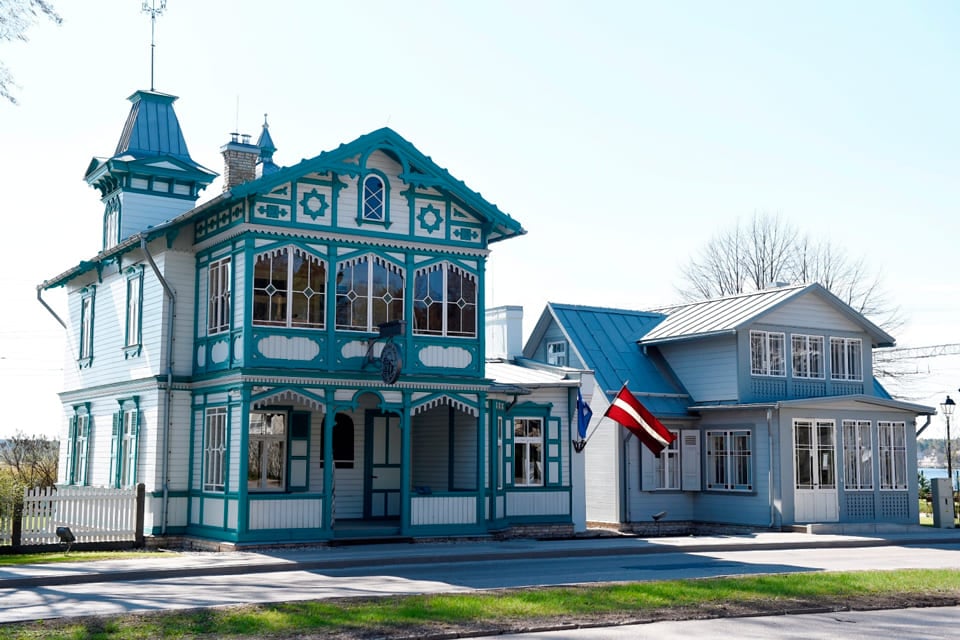
Aspazija, a famous Latvian poetess and wife of poet and public figure Janis Rainis, decided to leave Riga after her husband’s death. In 1933, she purchased a small mansion in Dubulti. The blue house is adorned with azure carvings. During Aspazija’s lifetime, the house often hosted writers, artists, and other creative individuals. She passed away in 1943, and with no heirs, the house became municipal property. Each summer, vacationers stayed there, uninterested in Aspazija’s legacy.
In 1990, a group of enthusiasts decided to reconstruct the house using documentary materials and testimonies from people, along with old photographs. They gathered period clothing, furniture, and household items, and in 1996, the Aspazija Museum was opened. The interior exudes a warm atmosphere of bygone days, with calm music playing and people reading Aspazija’s poems in her native language during tours. Tea parties are also hosted. The large first-floor room serves as an exhibition hall showcasing paintings, sculptures, and photographs.
Opening hours: 11:00 to 18:00, closed on Tuesdays and Saturdays. How to get there: Route taxis No. 7021, 7023 to the “Dubulti” stop from Riga’s railway station.
Jurmala Globe
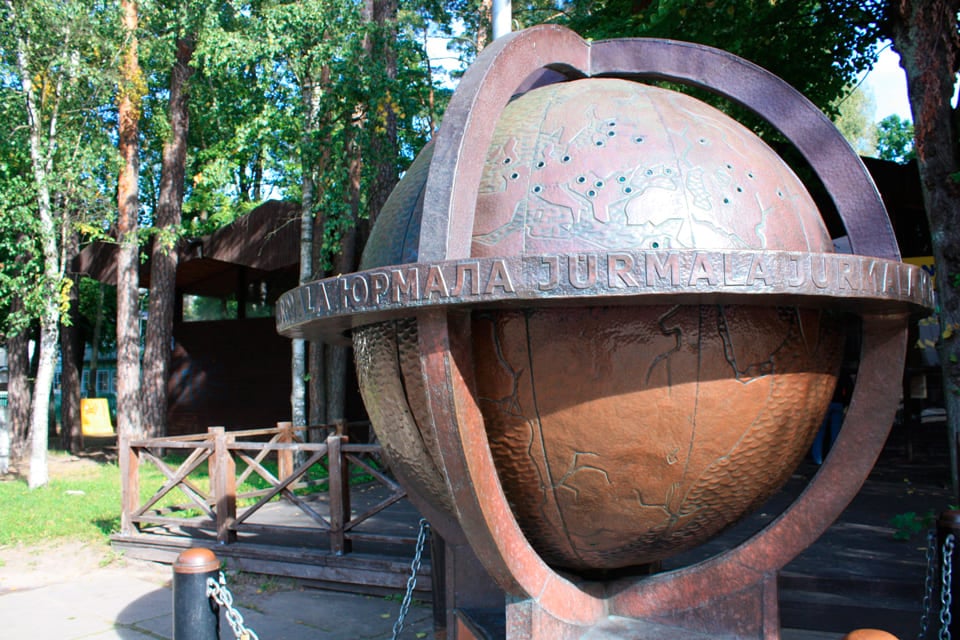
The largest globe in the country, inscribed with “Jurmala,” is located at the intersection of Jomas and Turaidas streets. Made of copper plates fixed onto a steel frame, the globe sits on a low pedestal and weighs almost a ton. The monument was started in the late 60s and restored in 2003. In 2015, construction equipment accidentally damaged the globe during work.
It was decided to dismantle and fully repair it, replacing the electrics and installing a rotation mechanism. In the evening, lights illuminate the world’s capitals, and the globe can rotate like the real Earth. It is a popular meeting spot for lovers and a favorite photo backdrop for tourists.
Turtle Sculpture
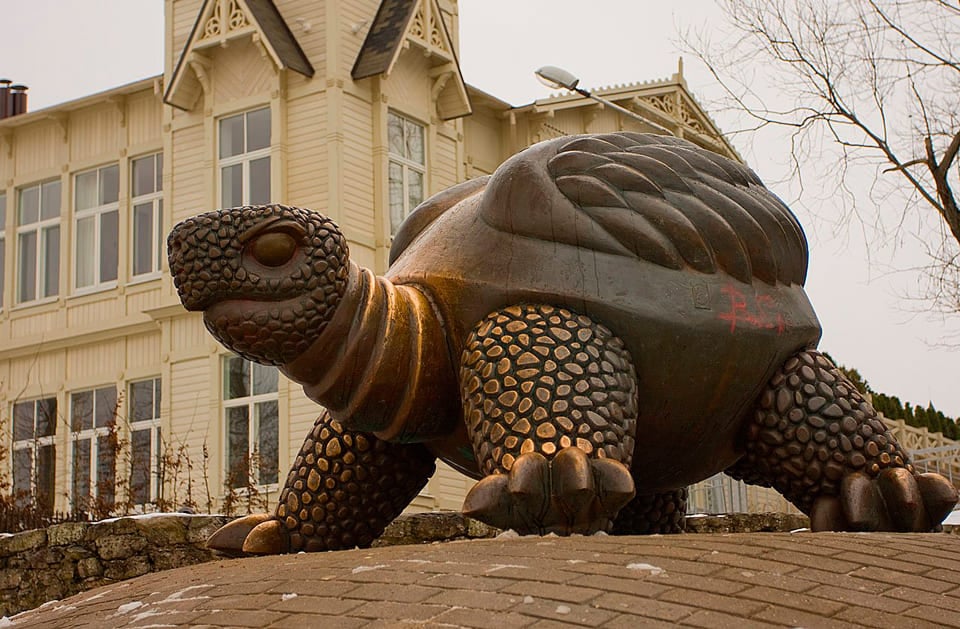
Near the sea, by the marine pavilion, stands a bronze monument depicting a turtle, created by the renowned Latvian sculptor Janis Bard. There are several opinions on why a turtle, an animal not typical for the area, was chosen for the monument near the beach. One theory is that it symbolizes longevity, another suggests it represents the slow pace of resort life. A third theory is that the turtle simply wanted to bathe in the cool sea waters. Every guest takes a picture with the turtle, a tradition that has now become customary. Another tradition is to rub the turtle’s head for a wish to come true. Located in Majori, accessible via Atra Street from the train station.
Ragakapa Nature Park
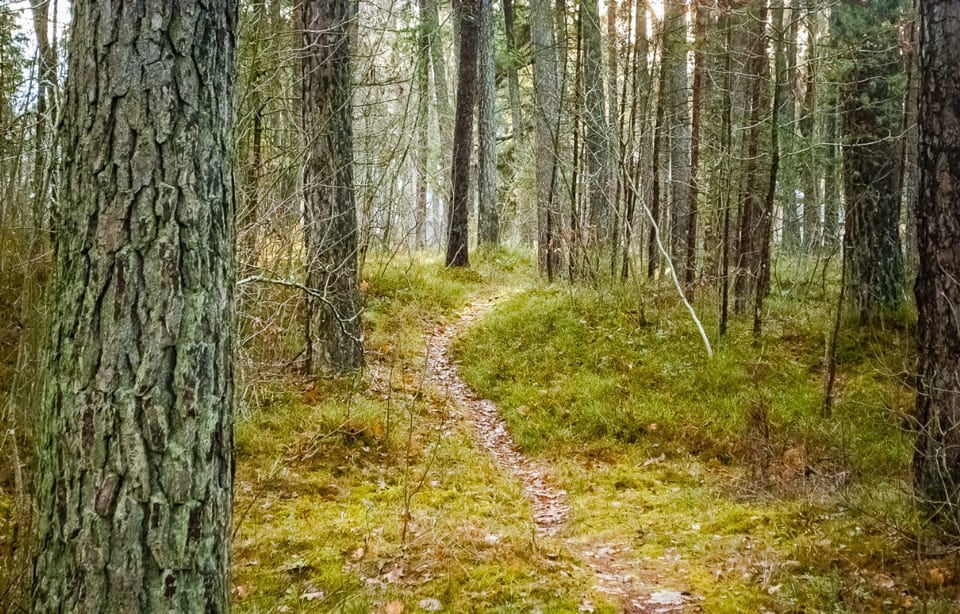
A walk through Ragakapa Park, located in one of the resort city’s districts, Lielupe, is a must. It is never crowded here, offering a peaceful retreat from noisy cities. Ragakapa is home to many relic 300-year-old trees. The park features the tallest (up to 18 meters) and widest (18 meters) dunes in Latvia, which can be seen along the coastline—a mesmerizing sight.
Besides pines, the park is home to other rare trees and animals that are becoming increasingly rare on Earth. Convenient ecological trails, named “Nature” or “Insect Trail,” are set up for visitors. Since the forest is on dunes, trails and steps on inclines and declines make it easy for children and people with limited mobility to navigate. The highest points have observation decks. To prevent tourists from getting lost, there are signs everywhere.
The park is easily accessible from the city, a walk along the beach from Majori.
Dzintari Concert Hall
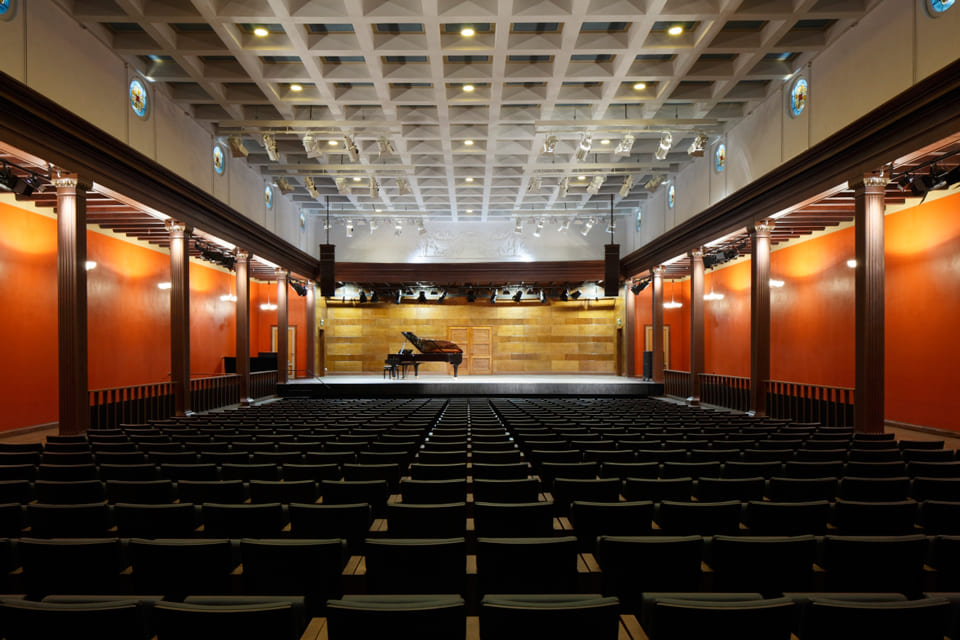
In 1897, the city built a stage area named “Edinburgh Spa Concert Garden.” The modern Dzintari Concert Hall was designed by architect Modris Gelzis in 1962. The structure has no walls, only a roof, and can hold up to 2,000 spectators. Dzintari was renovated in 2006, updating the stage to a five-tiered platform suitable for performances by both wind and symphony orchestras. Acoustic systems were replaced, infrared heaters installed, and comfortable seats for spectators added.
The Dzintari complex also includes a small hall, a small heated wooden structure that can accommodate 500 people, built in 1936 by architects Aleksandrs Birznieks and Viktors Mellenbergs. It is now recognized as a monument of architecture. The small hall was renovated in 2012, increasing its capacity to 600 spectators. Today, most Latvian festivals and concerts are held in the concert hall. Located 100 meters from the bay, in the city center. Trains from Riga stop at “Dzintari.”
Kemeri National Park
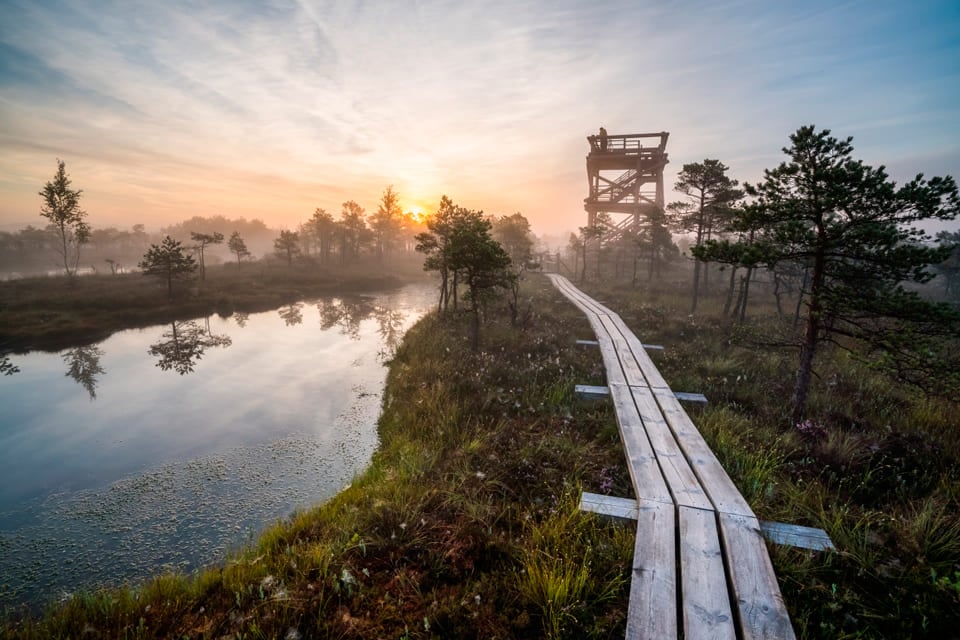
Kemeri Park is a nature reserve with picturesque marshland. The park’s flora and fauna are rich. Birds nesting in the marshes can be observed from specially equipped platforms. Further in is a black alder forest, unique as few such forests remain in Europe. The scene is magical, with lianas and hazel branches forming arches high above the ground.
The park is divided into conditional zones, with only two open to visitors. The specially protected zone is off-limits to preserve the unique nature. One side of the park has beautiful sandy beaches and picturesque dunes. Notable mineral springs, adorned with frog and lizard images, were installed over a century ago. For guests’ convenience and safety, the area is equipped with various paths and bridges.
From the center, take microbus No. 10.
Jurmala City Museum
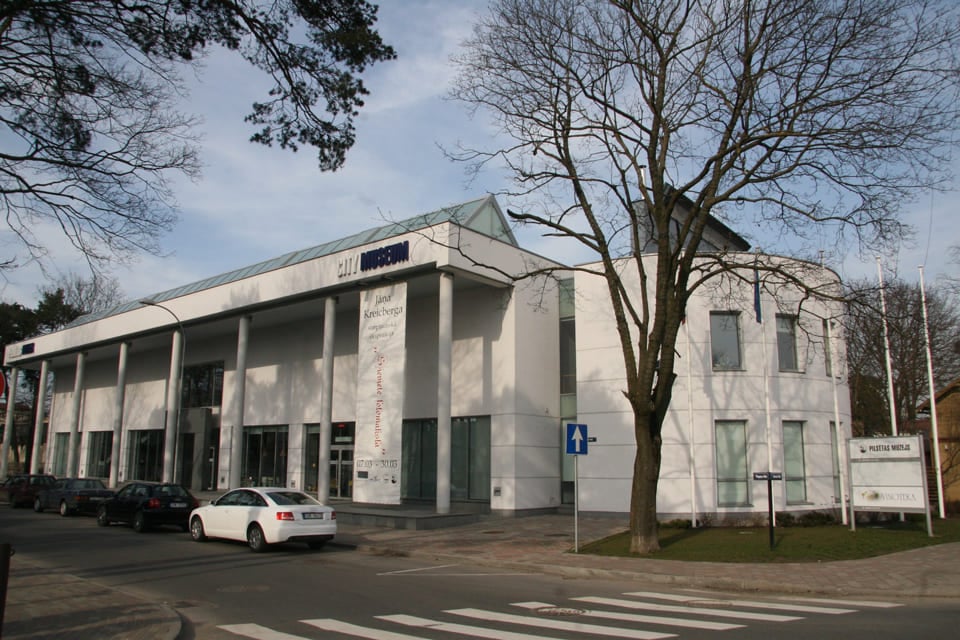
Founded in 1962, the city museum’s exhibition showcases the history of the resort city since the early 19th century. The museum’s collection includes nearly 50,000 items depicting the life of the area, including artifacts retrieved by marine archaeologists from the sea, a wide collection of beachwear, old postcards, and paintings by local artists. The exhibit “Ships in the Depths” details the history of shipping in the country, showcasing various types of ships, submarines, and schooners.
Another exhibition covers the history of Riga Seaside resorts and the lives of vacationers, detailing the development of sanatorium and medical industries, their health benefits, and the coastal climate’s resources. The exhibit features balneological sanatoriums in Kemeri and the coastal climate’s characteristics.
Visitors can learn from old photographs about how the resort’s streets once looked, what buildings have survived, and what the fashion trends were in the past century. The museum displays original furniture, tableware, and other household items, illustrating the interiors of living spaces. The cultural life of the city—folk and classical music festivals, holiday concerts, and other events—is also covered.
How to get there: Route taxis from Riga No. 7021, 7023 to the “Dubulti” stop.
White Dune in Lielupe
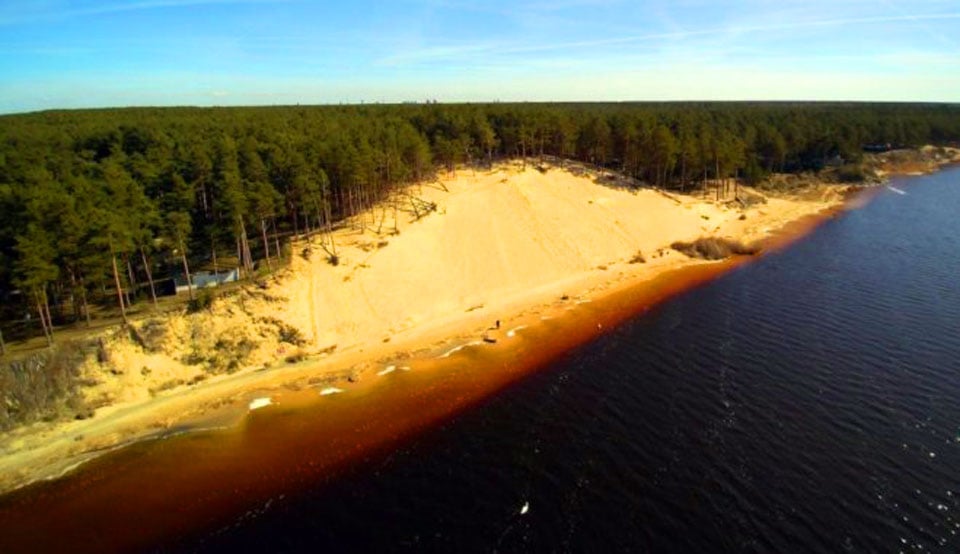
Several landmarks in the Baltic region share this name. This unique natural monument dates back to 1757. Numerous tourists are drawn to the opportunity to see the magnificent landscapes from the dune’s height. Nearby are the Ragakapa Nature Park and the Priedaine cottage area, where travelers stay in guesthouses. Priedaine is known for its 18th-19th century buildings and a functionalist-style railway station (built in the 20th century).
The Lielupe River, with over 250 tributaries, has frequently changed its course due to ice jams during spring floods. The White Dune formed as a result of such an event. Where the river once flowed, there is now a 17-meter-high hill. The hardened white sand of the dune resembles sandstone. According to scientists, the dune is doomed to disappear. It is eroding under the influence of winds and rains. To preserve the landmark, locals use waste to reinforce it, planting bushes and trees on the slopes. These measures slow down the erosion process but do not stop it.
Livu Aquapark

Opened in 2003, this entertainment complex is one of the largest water parks in Eastern Europe and the Baltic region. Over 16 million euros were spent on its construction. It attracts up to 300,000 visitors annually. The aquapark’s center features a three-story building and a 25-meter tower. The project authors and builders succeeded in creating a tropical paradise on the banks of the Lielupe River. The water park houses various pools, water slides, and fountains. The number of attractions is constantly increasing.
In 2019, a new water slide was introduced, featuring special mats for head-first descents. The aquapark is divided into themed zones catering to thrill-seekers, active recreation enthusiasts, and those who prefer a relaxed environment. The complex offers birthday programs for children and adults, with bistros, bars, cafes, and shops selling fashionable swimwear and souvenirs. SPA services are among the special offerings of the aquapark.
Former Emilia Ratzene Bathhouse
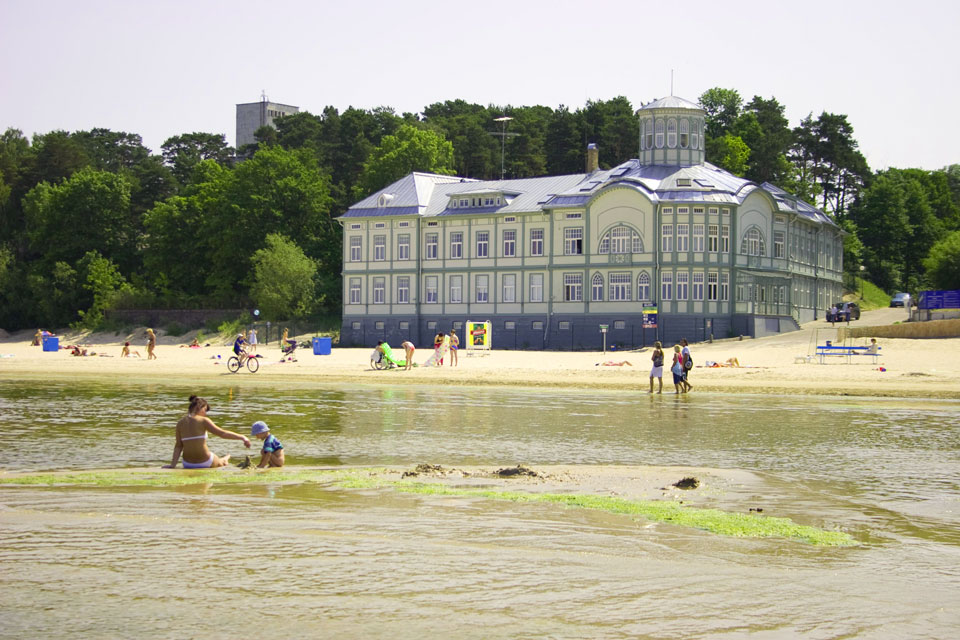
This elegant building is named after the woman who funded its construction in the early 20th century. Construction took five years, and the bathhouse opened in 2016. Visitors could enjoy hot baths with seawater and pine needles year-round. The bathhouse staff offered health treatments using essential oils and medicinal herbs. The establishment continued operating during World War II and remained open afterward, serving as a resort clinic with the latest equipment and highly qualified doctors.
A major renovation in 1982 led to significant changes, causing the palace-like building to lose its original appearance. The decor was restored, but builders made substantial changes. The historical monument gained a new entrance and windows. Only 15 years later was it partially restored to its former glory. Currently, the bathhouse is a private residence, not open to the public. Nearby are popular cafes and restaurants where visitors can admire the landmark.
Wacker’s House
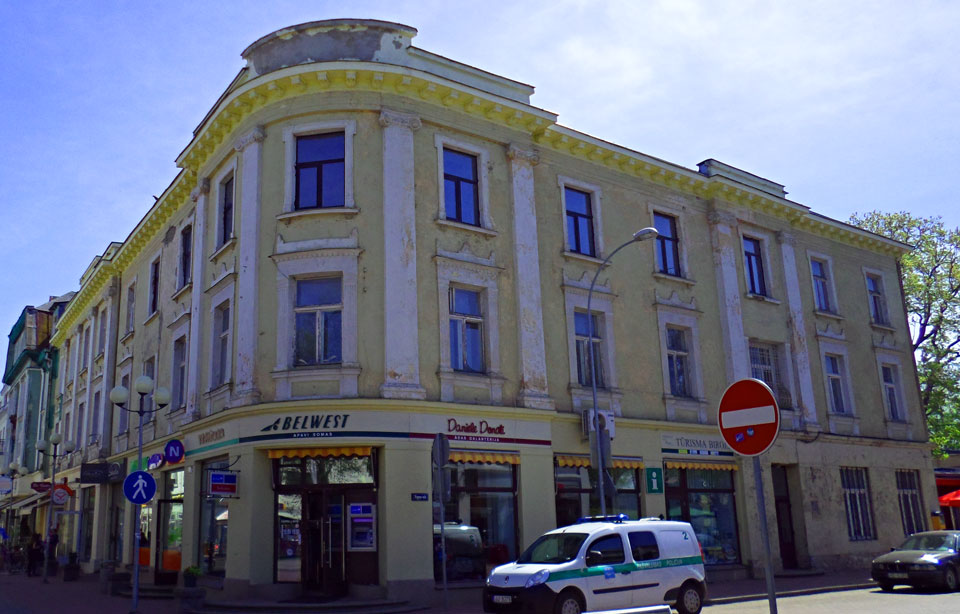
The building, erected in 1914, has an earlier history. Before the 20th century, it housed baker Steger’s yard, resembling a small estate, and Korovin’s shop. The yard hosted a local market and later belonged to Leopold Wacker. The estate included a bakery, an ice cellar, two cottages, and outbuildings. The two-story houses and barns burned down in 1913. Soon after, a new three-story building, Wacker’s House, was built on the fire site.
Initially, the premises housed shops and hotel rooms. In the 1930s, the building hosted the “Majori” hotel, a luxurious restaurant, and a city bank. Twenty years later, the ground floor opened as a state fish store. The walls of the trading premises were adorned with original paintings and decorative elements. The pride of the trade area was a fish pool lined with mosaic. Nothing remains of the past interiors. The local authorities managed to preserve only the exterior of the unique house. Today, private shops rent the premises, and the upper floors are used as apartments.
Marine Pavilion
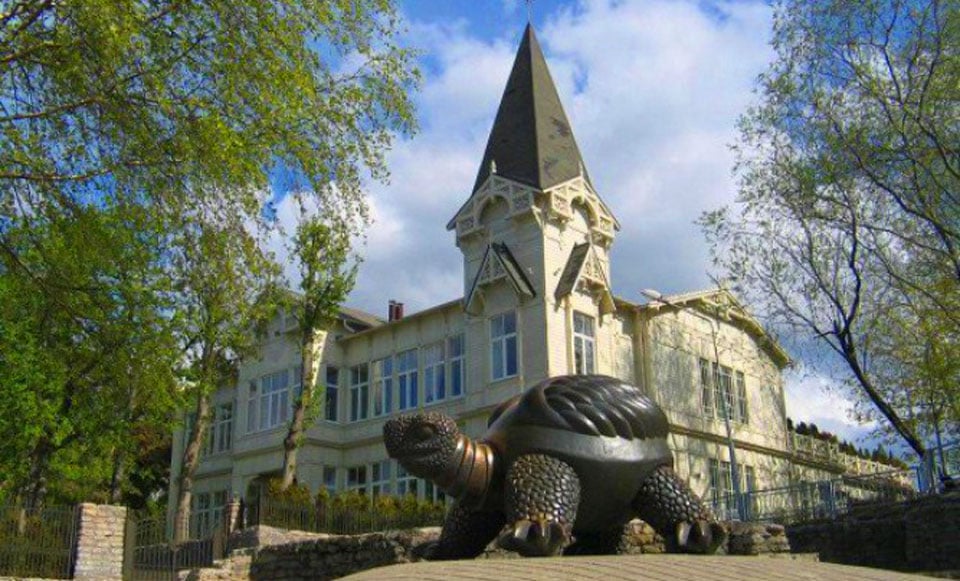
This two-story wooden entertainment pavilion opened to the public in 1909. The construction dates in historical sources vary because the work began 10-12 years earlier. The pavilion resembles a miniature royal palace. Built in a historicist style, its exterior can be considered an example of Riga Art Nouveau. The latter has several variations with rather blurred boundaries.
The pavilion confirms this, as its architecture seamlessly blends elements of eclecticism and national romanticism. The entertainment venue was intended exclusively for wealthy locals and respectable resort visitors. Swedish King Gustav V, whose controversial policies preserved the Scandinavian state’s integrity during World War II, frequently visited the pavilion.
In the 1980s, the building’s owners (Latvian enterprises and organizations) made significant changes to the interior. New stained glass windows, chandeliers, and decorative elements appeared in the dance hall, which did not benefit the architectural monument. Twenty-five years later, restorers managed to return the building to its original appearance, making it one of the city’s landmarks.
Horn’s Garden
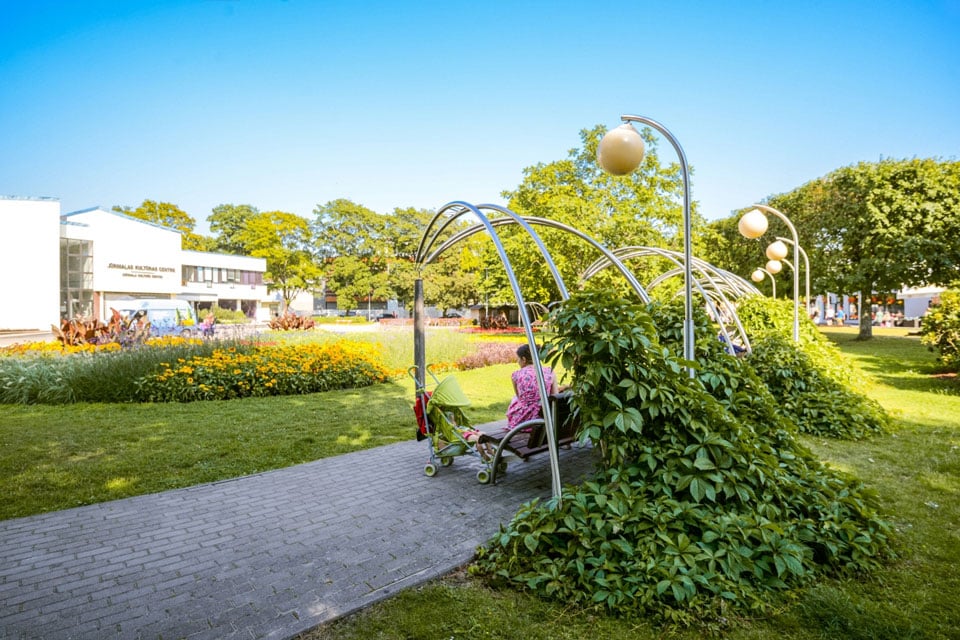
The park is named after a local resident who owned the plot in the 19th century. Before the garden, the area was a cemetery. This practice of creating recreational areas on former burial grounds remains common in many European countries. By the late 19th century, Horn’s Garden had been transformed, with two concert venues, a cinema, and a restaurant built.
In 1905, a musical piece that would later become Latvia’s national anthem was publicly performed in the garden for the first time. Eight years later, the garden burned down. Its restoration began in the 1920s. A new stage was built in the park. Major improvement work was halted during World War II, but locals continued to care for the garden, maintaining cleanliness and order.
In the 1970s, large-scale construction began in the park, including a cinema later renamed the House of Culture. A monument to famous Latvian poets, writers, public and political figures Rainis and Aspazija was erected at the garden’s entrance 20 years later. In the early 20th century, the couple performed at concerts in the garden.
Four years after Rainis’ death, Aspazija moved to Jurmala, where she spent her last years. For Russian-speaking audiences, her work is associated not with politics but with a tender lullaby from the TV series “Long Road in the Dunes.” The song is based on Aspazija’s poem “Christmas Candle.”
Sculpture “Turaida Rose”

Medieval legends can come to life in the most unexpected interpretations. The “Turaida Rose” monument is a testament to this. The heroine of a Latvian legend, a beautiful girl named Maija, chose death over dishonor, remaining faithful to her fiancé. She offered her seducer to test the strength of her “magic scarf,” which supposedly made anyone invulnerable in battle. The seducer demanded proof of the scarf’s miraculous properties. Maija tied the scarf around her neck and calmly asked to be struck with a sword. Naturally, the girl was killed.
Maija’s grave, known as the Turaida Rose, is near an old linden tree in Sigulda, 68 kilometers away. Newlyweds visit the tree to lay flowers and honor Maija’s memory. Authentic documents confirm a similar tragedy, which popular memory later romanticized.
In the city, a sculpture of a fashionably dressed girl on a cell phone awaits her fiancé. Maija’s delicate figure exudes tenderness, hope, and sadness. The contrast between the modern interpretation of the Turaida Rose and the grim medieval story hasn’t prevented the sculpture from becoming one of the city’s popular attractions.
Inner Light Theater of Glowing Paintings
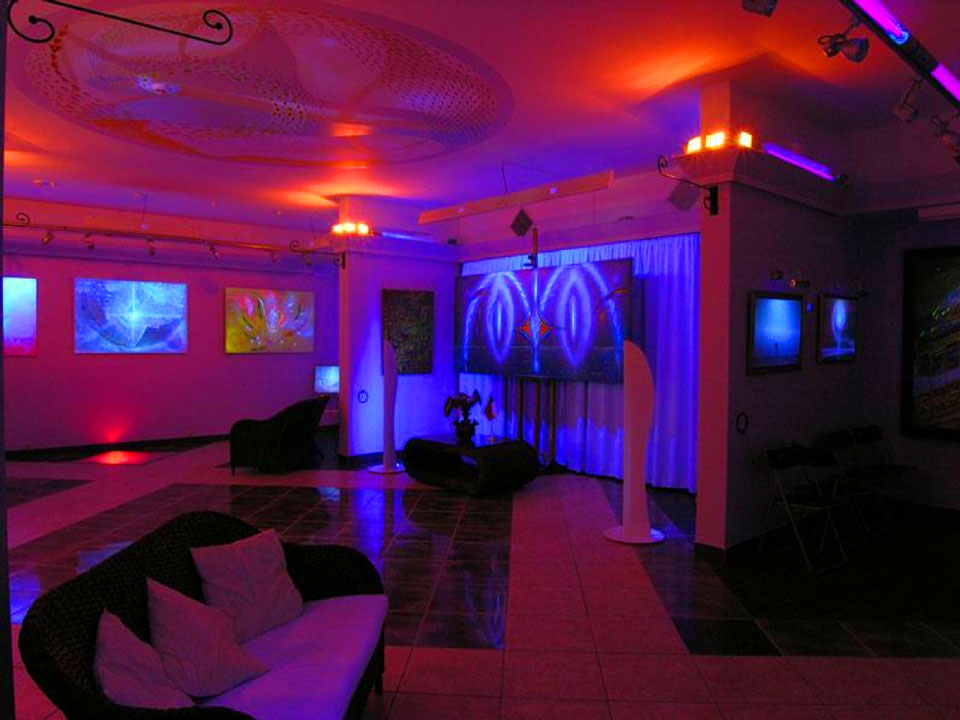
The gallery-theater is housed in a cozy two-story wooden mansion. The exhibition features paintings by the well-known Baltic artist Vitaly Ermolaev. The gallery’s name and the technique used to create his works translate to “Inner Light.” The artist patented his method of applying images, but the technique’s origins date back to ancient times.
In ancient Egypt, wax painting techniques were used to decorate palace, temple, and tomb walls.
Ermolaev perfected the technique by adding fluorescent paints, allowing the paintings to appear entirely different under varying lighting conditions. The gallery-theater halls are filled with pleasant music, and the lighting constantly changes. The paintings, like actors, “perform” different roles, creating an illusion of being in a parallel world for the viewers. The collection is regularly updated with new works. The artist conducts master classes for adults and children, teaching the basics of the “Inner Light” technique. The gallery also features a popular art cafe.
Jurmala Artists’ House
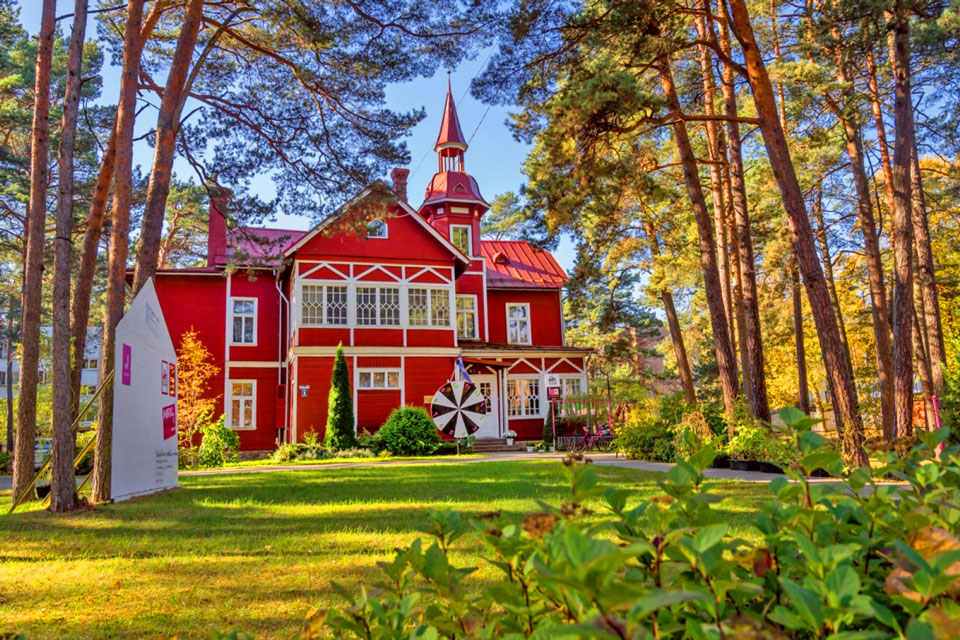
This two-story building is a well-known architectural monument in Latvia. Built in 1920, its architecture is typical of Jurmala and the Baltic region. The combination of traditional design elements has created a cozy atmosphere for creative meetings, art exhibitions, master classes, and applied arts activities in the two small exhibition halls of the house. The building belongs to the Latvian Artists’ Union, and the city has a branch of this organization.
Throughout its history, there have been moments when the future of the building was under threat, but public efforts prevented its demolition. The Artists’ House functions as a museum, art gallery, and creative platform where intellectuals, artisans, and art enthusiasts gather. It is known in the Baltic region for its educational programs for those who want to learn weaving crafts. Special emphasis is placed on children’s and youth activities, fostering a spirit of love and respect for national culture in the younger generation.
Jurmala is a wonderful resort that offers tranquility, excellent service, and clean air. Visiting these extraordinary, beautiful places at least once in a lifetime is a must.

